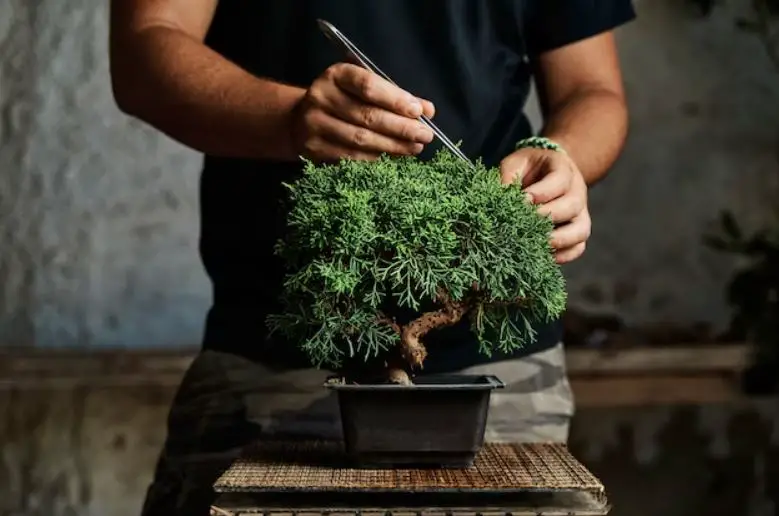The Art of Crafting Indoor Bonsai Forests: A Guide to Creating Miniature Ecosystems

Have you ever been captivated by the enchanting beauty of bonsai trees? Imagine taking that fascination to a whole new level by creating your very own indoor bonsai forest. Bonsai forests are an exquisite form of art, where multiple miniature trees are meticulously arranged in a single container, creating a harmonious composition reminiscent of a natural forest.
While information on individual bonsai tree care may be abundant, guidance on selecting appropriate species, creating and maintaining indoor bonsai forests, and achieving a harmonious aesthetic may be relatively scarce.
In this article, we will delve into the world of indoor bonsai forests, providing you with valuable insights and practical tips to embark on your journey of cultivating nature’s miniature paradise.
Why Indoor Bonsai Forests?
Bonsai forests possess a unique allure that sets them apart from individual bonsai trees. They have the power to transport you to a tranquil realm of serenity and natural beauty. Just as a walk through a lush forest brings a sense of peace, an indoor bonsai forest can infuse your living space with a similar ambiance.
The intricate combination of miniature trees, with their delicate foliage and artistic arrangements, evokes a connection to nature in its most elegant form.
Moreover, cultivating an indoor bonsai forest provides you with an opportunity for creativity and artistic expression, allowing you to shape and design your own miniature ecosystem.
Selecting the Right Tree Species
When embarking on the creation of an indoor bonsai forest, selecting the right tree species is crucial. Each tree species possesses unique characteristics that influence its growth habits, size, and adaptability to indoor environments.
Consider factors such as the ultimate height and width of the trees, their growth patterns, and their ability to thrive indoors. Here are some popular tree species that are well-suited for indoor bonsai forests:
Pine Trees
Pine trees exude a sense of elegance and timelessness, making them a popular choice for bonsai forests. With their long, slender needles and graceful branches, pine trees bring a touch of tranquility to the composition.
Various pine species, such as Japanese Black Pine and Mugo Pine, are suitable for indoor cultivation. Mastering pruning and shaping techniques specific to pine trees will allow you to create stunning visual effects within your bonsai forest.
Juniper Trees
Juniper trees possess a natural charm that complements the aesthetics of a bonsai forest. Their evergreen foliage, intricate bark, and twisted branches create a captivating visual appeal.
Juniperus Procumbens, commonly known as the Japanese Garden Juniper, and Juniperus Chinensis, the Chinese Juniper, are popular choices for indoor bonsai forests. Understanding the nuances of maintaining and caring for juniper bonsai trees will help you create a captivating and long-lasting display.
Maple Trees
Adding vibrant colors and a touch of seasonal drama to your bonsai forest, maple trees are a delightful choice.
With their distinctive palmate leaves and stunning autumn foliage, maple species such as Japanese Maple and Trident Maple can inject a burst of visual interest into your composition.
Careful leaf pruning and seasonal care techniques will enable you to maintain the beauty of your maple bonsai trees throughout the year.
Creating an Indoor Bonsai Forest
Creating an indoor bonsai forest is an art form that involves careful consideration of various elements. It begins with selecting the right container and soil composition. The container should not only provide adequate space for the trees but also possess a drainage system to prevent waterlogging.
The soil composition should promote healthy root growth while retaining moisture. Additionally, arranging multiple trees in a harmonious design is crucial to achieve a natural and visually appealing composition.
Consider the placement of each tree, creating a sense of perspective, depth, and balance within the forest. Experiment with different arrangements until you find the perfect configuration that resonates with your vision.
Essential Care and Maintenance
Proper care and maintenance are essential to ensure the health and longevity of your indoor bonsai forest. Light and temperature conditions play a vital role in the well-being of your trees. Most bonsai forests thrive in bright, indirect light, so placing them near a window that receives sufficient sunlight is ideal.
However, be cautious of intense, direct sunlight, as it can scorch the delicate foliage. In cases where natural light is limited, artificial grow lights can be used to provide the necessary illumination.
Watering is a critical aspect of bonsai tree care. The frequency of watering depends on various factors, including tree species, pot size, and environmental conditions. It is crucial to check the moisture level of the soil regularly and water when the surface starts to dry out.
However, overwatering should be avoided, as it can lead to root rot and other detrimental issues. Fertilizing the bonsai forest at appropriate intervals with a balanced, slow-release fertilizer will provide the essential nutrients for healthy growth.
Pruning, wiring, and shaping are integral parts of maintaining the desired aesthetic of your bonsai forest. Regular pruning helps control the size and shape of the trees, ensuring they remain in proportion to the overall composition.
Wiring allows you to guide the branches and create the desired form, while shaping techniques, such as pinching and leaf pruning, help refine the foliage density and enhance the artistic appeal of the forest.
Design Principles for Bonsai Forests
Designing a captivating bonsai forest requires an understanding of key design principles that mimic the beauty and harmony of a natural forest environment. The concept of balance and proportion plays a vital role in creating a visually pleasing composition.
Each tree should complement and interact with the surrounding trees, forming a cohesive whole. Aim for asymmetry and irregularity, as they convey a sense of naturalness and prevent the composition from appearing static or contrived.
By carefully considering the placement, height variation, and spacing of the trees, you can achieve a compelling illusion of a miniature forest within your indoor space.
Troubleshooting Common Issues
As with any living entity, bonsai forests are susceptible to certain issues that may hinder their growth and vitality. Pests, such as aphids or spider mites, can pose a threat to the health of your trees.
Regular inspection and prompt action are essential to keep these pests under control. Diseases, such as root rot or fungal infections, can occur if the trees are overwatered or subjected to poor drainage.
It is important to maintain a healthy root system and provide adequate airflow around the trees to prevent these issues. Should you encounter any problems, consult reputable resources or seek advice from experienced bonsai enthusiasts to address the specific needs of your indoor bonsai forest.
The Art of Patience: Nurturing Bonsai Forests
Cultivating and nurturing an indoor bonsai forest is a journey that requires patience, dedication, and a deep connection with nature. Bonsai trees are known for their slow growth, and the transformation of your forest will unfold gradually over time.
Take pleasure in observing the subtle changes, the new shoots, and the delicate dance of the foliage. Allow yourself to be fully present in the moment as you care for your bonsai forest, appreciating the artistry of nature in its miniature form.
The rewards of your efforts will be evident as your bonsai forest flourishes, becoming a captivating centerpiece that brings joy and tranquility to your daily life.
Conclusion
Indoor bonsai forests offer a unique opportunity to immerse yourself in the beauty of nature on a miniature scale. By carefully selecting the right tree species, creating a harmonious composition, and providing essential care, you can cultivate a breathtaking bonsai forest within the confines of your home.
Embrace the principles of design, troubleshoot common issues, and approach your journey with patience and passion.
As you embark on this horticultural adventure, you will witness the transformation of your indoor space into a haven of natural beauty—a captivating paradise of intricate miniature trees that will continue to inspire and bring joy for years to come.
FAQs (Frequently Asked Questions)
Can I create an indoor bonsai forest with different tree species?
Absolutely! Mixing different tree species can add diversity and interest to your bonsai forest. However, it is crucial to ensure that the selected species have similar care requirements to thrive together harmoniously.
How often should I water my indoor bonsai forest?
The watering frequency depends on factors such as tree species, pot size, and environmental conditions. It’s essential to check the moisture level regularly and water when the soil surface starts to dry out. Avoid overwatering, as it can lead to root rot.
Do bonsai forests require special lighting?
Yes, bonsai forests typically require bright, indirect light. Place them near a window that receives sufficient sunlight, or use artificial grow lights to provide the necessary illumination for healthy growth.
Can I create a bonsai forest from existing bonsai trees?
Certainly! You can gather multiple established bonsai trees and arrange them in a container to create a forest-like composition. Ensure that the trees are compatible in terms of care requirements and aesthetic appeal.
What are some beginner-friendly tree species for indoor bonsai forests?
Some beginner-friendly tree species suitable for indoor bonsai forests include Ficus, Chinese Elm, and Jade. These trees are relatively easy to care for and forgiving for beginners, making them great choices for starting your bonsai journey.
Also READ!
Medicinal Plants for Indoor Cultivation: Harnessing Nature’s Healing Power. READ:homeimprove360.com/medicinal-plants-for-indoor-cultivation/
